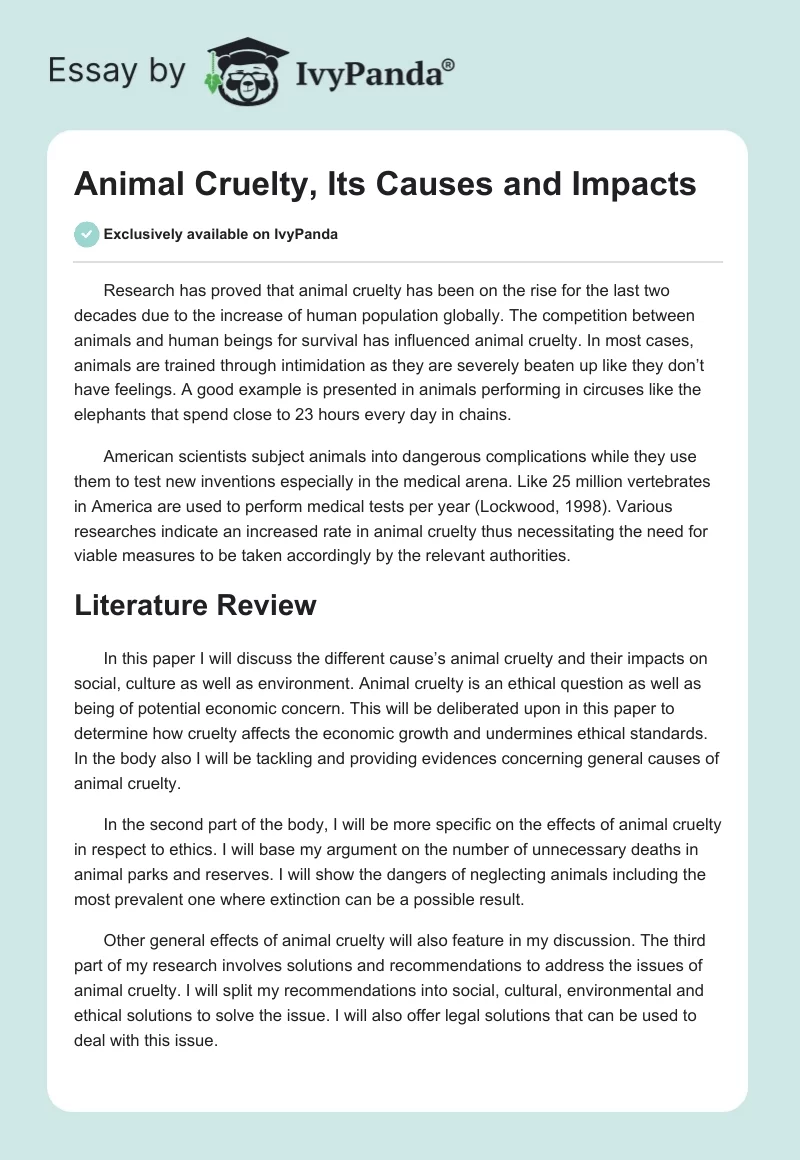Animal cruelty is a pervasive issue that evokes strong emotions and deep ethical concerns. For academics and researchers, delving into this subject offers a unique opportunity to explore its multifaceted nature. Understanding the complexities surrounding this topic can lead to improved practices and policies for animal welfare. Consequently, formulating robust research questions is crucial to investigating animal cruelty effectively. Here, we will explore various possibilities that can ignite curiosity and promise a shift in perspective.
First and foremost, one could examine the causes of animal cruelty. What socio-economic factors contribute to individuals engaging in cruel behavior towards animals? This question opens up avenues for analyzing how poverty, education, and cultural beliefs interplay in fostering environments where cruelty flourishes. Moreover, researchers may look into the role of mental health; are individuals who commit acts of violence against animals experiencing psychological disorders? Such inquiries can unearth the underlying drivers of this societal ill.
A further inquiry could focus on the relationship between animal cruelty and violence against humans. Is there a correlation between individuals who exhibit violent behaviors toward animals and those who perpetrate violence against other humans? The “link theory” suggests that cruelty towards animals can be indicative of future violent behavior towards people. This line of questioning not only deepens the understanding of human psychology but also underscores the urgent need for intervention strategies.
Another important area of investigation involves the effectiveness of anti-cruelty laws. How well do existing laws protect animals from abuse? Are there significant discrepancies in enforcement across different regions? Evaluating the legal frameworks surrounding animal rights can provide critical insights into whether legislative measures are adequate and highlight potential areas for reform. Such research can inspire policymakers and activists alike, creating a more directed and impact-oriented approach to animal welfare.
Researchers may also want to study the impact of media representation on public perception of animal cruelty. How do portrayals of animal abuse in literature, film, and news outlets shape societal attitudes? Exploring the narratives that dominate public discourse can reveal how they influence advocacy efforts and the collective consciousness regarding animal rights. Furthermore, this line of inquiry could delve into the ethics of sensationalism in reporting animal cruelty incidents. Is the presentation of such stories increasing awareness or merely desensitizing the audience?
Equally important is investigating the psychological effects on victims of animal cruelty. How does witnessing or experiencing animal abuse affect individuals, particularly children? Understanding the emotional and psychological ramifications can augment advocacy efforts, as supporting those who are affected by such trauma can be instrumental in prevention strategies. Interviewing survivors or conducting longitudinal studies could illuminate the lasting scars left by animal cruelty.
Moreover, exploring the role of education in preventing animal cruelty merits attention. How effective are educational programs aimed at teaching empathy towards animals? Researching the outcomes of such programs could yield insights into how early interventions can instill compassion in younger generations. This could include studying curricula that incorporate humane education and assessing their long-term impact on reducing instances of animal abuse.
The effectiveness of rehabilitation programs for offenders is another compelling research avenue. Are programs designed to reform individuals who have committed acts of cruelty towards animals successful in changing behavior? Investigating the psychological and social dimensions of such initiatives can provide useful data for designing more effective rehabilitation strategies. Understanding how these programs affect recidivism might shed light on how society approaches issues of violence and empathy training.
Another question worth examining may be, how do cultural attitudes towards animals influence the prevalence of cruelty? Different cultures have varying perceptions of animals’ roles in society, which can directly affect the treatment and protection afforded to them. Conducting comparative studies across cultures can yield a deeper comprehension of how societal values shape behaviors toward animal welfare, potentially guiding tailored interventions that respect cultural contexts.
Finally, one could investigate the impact of social media on combating animal cruelty. How have platforms like Facebook, Twitter, and Instagram mobilized the anti-cruelty movement? Analyzing trends in awareness campaigns, grassroots organization efforts, and public engagement on social media can illuminate modern strategies in advocacy work. This perspective fosters curiosity about the interplay between digital activism and traditional intervention methods.
In conclusion, the landscape of animal cruelty is vast and intricate. Any exploration of this topic through academically driven research questions can amplify understanding, fostering a more compassionate society for animals. By addressing the above inquiries, researchers can contribute to a body of knowledge that empowers both policy creation and public awareness, ultimately shaping a future where animal cruelty is no longer tolerated.







